TREK DIFFICULTY
Moderate
TREK DURATION
6 days
TREK DISTANCE
38 kms
AGE LIMIT
10 to 70 years
“Where Blooms Paint the Mountains, Dreams Take Flight, and Nature Unveils Its Canvas.”
The Valley of Flowers trek is one of India’s most popular treks in the Himalayas. People who haven’t even stepped into the Himalayas, have heard about the Valley of Flowers trek.
But there is a solid reason behind Valley of Flower’s legendary popularity – it is one of India’s oldest known treks.
In 1980, the Indian government created the Valley of Flowers National Park, and later in 2002, it was recognized as a UNESCO World Heritage Site. This pushed Valley of Flowers on the bucket list of trekkers from around the world.
Having said that, you must note that the Valley of Flowers trek is not easy. It is a moderate level trek, with slightly longer trekking days. So, prepare well for this trek.
This extensive trek guide contains all details you need to know to do this trek.
And, it also contains an interesting insight, a story of how one can fall in love with Himalayan treks after trekking to the Valley of Flowers and Hemkund Sahib. Yes, that can happen.
Valley Of Flowers Trek Information
We have always wanted trekkers to be well-informed before they go on a Himalayan trek. It has detailed information about each day of the trek, what to expect, and how you need to prepare for it.
Short Itinerary
DAY 1
Drive from Rishikesh to Pulna
Drive Distance: 272 km
Drive Duration: 11 hours
Pick up point: The Valley Rides assembly point at Natraj Chowk
Pick up Time: 5.30 Am
Location of The Valley Rides basecamp: Pulna
DAY 2
Trek from Pulna to Ghangaria
Trek distance: 9 km
Trek Duration: 5-6 hours
Altitude gain: 7,785 ft to 10,520 ft
A short drive followed by a gently ascending river-side trail. The trail is well-laid out with several trekkers and pilgrims frequenting the route.
DAY 3
Ghangaria to Valley of Flowers and back
Trek distance: 8 km
Trek Duration: 6 hours
Altitude gain: 10,520 ft to 11,550 ft
A rewarding trek to Valley of Flowers, with flowers blooming on either side of the trail.
DAY 4
Ghangaria to Hemkund Sahib and back
Trek distance: 12 km
Trek Duration: 8-9 hours
Altitude gain: 10,520 ft to 14,107 ft
A series of switchbacks continuously climb to Hemkund Sahib. The gurudwara and lake at the top are a wonderful reward for the challenging climb.
DAY 5
Trek from Ghangaria to Pulna.
Trek distance: 9 km
Trek Duration: 4 hours
Altitude loss: 10,520 ft to 6,215 ft
DAY 6
Drive from Pulna to Rishikesh
Drive Distance: 272 km
Drive Duration: 11 hours
IMPORTANT POINTS
⦁ It is mandatory for trekkers to carry a copy of their photo ID for entry at forest check posts on the trek.
⦁ Your stay will be arranged at Camp/lodges throughout the trek. The number of people per Tent/room depends on the availability at the time.
⦁ We have a cloakroom facility at the base camp for excess luggage. luggage is chargeable at Rs 500 per luggage. Do not leave behind any valuables in the cloakroom.
⦁ Any additional cost incurred due to landslide that happens before or after the trek will have to be borne by trekkers.
Detailed Itinerary
DAY 1
Drive from Rishikesh to Pulna.
Drive Distance: 272 km
Drive Duration: 11 hours drive to Pulna.
Pick up from The Valley Rides assembly point Natraj Chowk, Rishikesh as the pickup at 5:30 am
The base camp for Valley of Flowers is located at Pulna. The drive from Rishikesh to Pulna is a beautiful one. The route is along the tributaries of Ganga. The road goes along hugging the mountainside and you see the forests and valleys of Garhwal below you.
After you cross the village of Pipalkoti, the entire scenery changes. You suddenly see a stark difference in the landscape when approaching closer to the Greater Himalayan Range.
Watch out for the big mountain of Mt. Drongiri from the base camp. This peak will be your company for the entire trek duration.
Pulna has a few interesting things that you need to know. If you are reaching a day in advance or have time post your trek, these are the things to look out for – The Hot springs, the first sight of Mt. Dronagiri peak welcoming you and the region of Lata, Reini where the Chipko movement started in India.
DAY 2
Trek from Pulna to Ghangaria
Trek Distance: 9 km
Trek Duration: 5-6 hours
Altitude gain: 7,785 ft to 10,520 ft via 6,720 ft
Difficulty: Easy-moderate. Gradual ascent throughout on a well- defined trail
The trail is well-defined. It is usually full of Sikh pilgrims walking up and down. Notice the cleanliness on the trail despite hundreds treading upon it every day. It’s a heartening and motivating sight. All thanks to volunteers who sweep the trail every day.
The 9 km trek from Pulna to Ghangaria goes all the way along the river. Stop by any roadside Dhaba for a drink or a bite to eat. The trail is alternately sunny and shaded. At around the midpoint of the day’s trek, you cross the river and go to the other bank. After this, you no longer trek alongside the river.
The trek takes 5-6 hours and you approach a tabular land. This is when you know you are close to Ghangaria. Ghangaria has a helipad and some space for camping. Half a kilometre from the helipad is the one-street village of Ghangaria, lined with hotels, restaurants and a Gurudwara. The Gurudwara offers free accommodation and food to all.
DAY 3
Ghangaria to Valley of Flowers and back
Trek Distance: 8 km
Trek Duration: 6-7 hours
Altitude gain: 10,520 ft to 11,550 ft and back
Difficulty: Easy. Flat walk in the valley
Leave Ghangaria early to give yourself the whole day to spend at Valley of Flowers. The trail splits in less than a kilometre. There is a gate to buy entry tickets to the valley. Walk inside and notice the small flowering plants springing up on either side. A kilometre into the gate, there is a scenic bridge across a stream gushing below.
Tall Rocky Mountains rise before you. Notice that the well-laid-out trail has now become a small footway along the side of the valley. The stream flows below you and there are small, hard snow patches by the side. On the trek inside Valley of Flowers, you see very few people around you. This may come across as a big and welcome contrast to the previous day’s trek, where there were hundreds. The scenery has also taken a drastic turn for the better and any direction you turn to looks picture-perfect. Trek along for a couple of kilometres on the flat path and to your right opens up the valley. Cross another rickety bridge and collect water to drink from below.
The entire valley is generally a carpet of colours – green, yellow, red, blue. It is surrounded by mountains with trees at lower levels, brown and grey soil in the middle and bright snow at the top. A bright sunny day will ensure deep blue skies completing the picture and taking it beyond your imagination. The valley is a botanist’s dreamland! One can find flowers, leaves, and buds of various shapes, sizes, and colours, all growing together. Notice various types of bees and insects hovering on these strange flowers.
Walk further into the valley and you will be engulfed with an amazing scent, which unfortunately cannot be captured but can only be felt. The valley stretches 5-7 km further until it ends with a glacier visible at a distance. The stream flows through the valley. Take off your shoes and dip your feet into them to experience the icy cold water.
Prominent flowers that you will see in July-August include Meadow Geranium, Snake Foil, Hooked Stick Seed, Himalayan Rose, Blue Poppy, River Anemone, White Leaf Hog Foot and Dog Flower. Carry packed lunch from Ghangaria on the Valley of Flowers trek day. There is no food available in the valley. Overnight camping isn’t allowed either. Plan your return along the same path by early afternoon. The afternoon sun falling on the valley from a different direction gives a whole new perspective to the same place you saw in the morning.
DAY 4
Ghangaria to Hemkund Sahib and back
Trek Distance: 12 km
Trek Duration: 9-10 hours
Altitude gain: 10,520 ft to 14,107 ft and back
Difficulty: Moderate-difficult. Steep ascent for about 4 hours to reach Hemkund Sahib and steep descent back.
Start your day early. The weather can be impulsive in the afternoon and sudden cloud cover and rain can get you stranded if you do not get down on time. The thought of getting up before 5.00 am can be daunting but the Gurudwara makes it easy. Their day starts at 4.00 am with the singing of bhajans.
By 5.00 am, you hear people outside the gate of the Gurudwara chanting in the chorus and the horses being readied to go up to Hemkund Sahib. Get up and grab a hot drink of chai. A poncho (light raincoat) and a trekking pole can be handy on the trek to Hemkund. Pass the deviation to Valley of Flowers. Continue to trek up the steep path slowly but steadily. Spot a pretty waterfall on your right falling through the rock walls on the right. After about 2 hours of walking, you are higher than the tree line and the views begin to get better. Mark the route to Valley of Flowers on the mountain in front of the river gorge. After another hour of slow walking with numerous breaks, you begin to feel reduced oxygen levels in the air. A melting glacier lies on the way. Take generous breaks while climbing up the steep path. These breaks are important as going up very fast could only mean inviting altitude sickness. Do not sit down during these breaks. Sitting down causes your muscles to relax and getting back on track can be very difficult. An hour of stiff climbing brings you to Hemkund Sahib Gurudwara. The lake lies just behind it. The Hemkund Sahib lake remains frozen for six months. Warm yourself in the Gurudwara and have generous helpings of hot tea and khichdi.
Walk around to the other side of Hemkund Lake. It exudes an aura of peace and serenity. It’s crystal clear, undisturbed and reflects the mountains surrounding it. The lake and the Gurudwara in this setting are a sight to watch. Around Hemkund, the Himalayan flower, Brahma Kamal grows abundantly. This flower grows only at heights of 10,000 ft to 15,000 ft. Leave Hemkund by afternoon. The walk down can be strenuous on the knees and toes. It takes 4- 5 hours to walk down the 6 km.
DAY 5
Ghangaria to Pulna
Trek Distance: 9km
Trek Duration: 5-6 hours
Altitude loss: 10,520 ft to 6,215 ft via 6,720 ft
Difficulty: Easy-moderate. Gradual ascent throughout on a well- defined trail
The trail back to Pulna is on the same path that you took on Day 1.
DAY 6
Pulna to Rishikesh
Drive Distance: 272 km
Drive Duration: 11 hours
Drive down to Rishikesh.
We will start at 6 am sharp & will reach to Rishikesh by 6.30 pm.
Important note: Since Valley of Flowers is a monsoon trek, there are possibilities of roadblocks due to landslides. Account for this by adding a buffer day to your travel plan.
How Difficult Is Valley of Flowers Trek
Moderate
Suitable for Fit Beginners
At The Valley Rides, while rating a trek difficulty we consider several factors. These include, altitude gained every day, length of a trek every day, highest altitude, nature of the terrain, weather etc. Based on this we rate a trek as easy or difficult or somewhere in between.
To be honest, the Valley of Flowers trek, which climbs to 14,107 ft, is not difficult. It is rated as ‘moderate’. That too only because trekking days are slightly long.
A moderate rating refers to marginally longer trekking days with a few steep climbs (example: climb from Ghangaria to Hemkund Sahib). This makes it a notch more difficult than the easy-moderate treks like Kedarkantha and Dayara Bugyal.
To give you a perspective, the Valley of Flowers trek is 38 km long. And you cover this distance in 4 days. Every day you gain an altitude of approximately 2000 ft, and on some days even more. For your body to handle this trekking distance and altitude gain, you need to have good fitness levels.
But the trek has easy exits and there are no technical sections.
To make it easier for you to take note, here’s a list of difficult and tricky sections on the Valley of Flowers Trek:
Best Time to Do Valley of Flowers Trek
Valley Of Flowers Trek in July-August-September:
Day Time Temperature: Between 10 °C to 18 °C, based on precipitation and cloud cover
Night Time Temperature: At night, the temperature drops to almost 3 °C to 5 °C
The Valley of Flowers trek is not timed for its snow experience but early in the season you do get to walk on snow bridges and snow patches. The trail to the valley of flowers has snow bridges formed over the river and at many places, you walk right beside the snow bridges. On the trail to Hemkund too, you get a handful of snow patches to cross early in the season. Expect to see melting snow flowing into Hemkund Sahib early in July. Most of the snow is gone once the rains set in by August.
Number of warm layers recommended: 3 warm layers. You will be staying in Camp/lodges and will be provided sleeping bag/warm blankets.
The gates to Valley of Flowers open at the beginning of June. But the best time to visit is between July and September. You can extend it to the end of September.
Even in the best months between July and September, the trek is not the same every month.
July
It is lush green. The flowers are just beginning to bloom. Peak flowering season starts after mid-July. There are a few old snow bridges and some melting snow patches. Expect a riot of colours. Rains pick up after mid-July. The valley is least crowded in July.
August
The first 15 days of August see a huge number of flowers Though there’s a good amount of rain at Govindghat. But at higher altitudes, it’s not always heavy. It’s crowded around weekends. But on weekdays you don’t have to worry about crowds.
September
Flowers have wilted by now and the valley is swelling with a crowd of pilgrims.
Valley Of Flowers in July
In July expect a lot of greenery. You will also find a bit of snow till rains begin in full swing. But there won’t be many flowers until mid-July. Since the trek climbs to such a high altitude (~14,000 ft), it retains snow even in July. Only later in July, does the rain wash off the snow.
Monsoon also starts setting in in July. But it doesn’t rain much in the first half. Monsoon gains momentum in the second half of July. Snow too starts getting washed off by then.
Valley Of Flowers in August
In August, monsoon clouds hang low and wash over the entire valley. Maximum flowers in the valley bloom during this period. While you get a good amount of rain at Govindghat during this time, at the higher altitudes it turns into a drizzle.
Even the crowds aren’t heavy during the initial days of August. This makes it a perfect time to explore the valley blooming with flowers.
Valley Of Flowers in September
Flowers begin wilting by the second half of August and by September very few flowers are left. But there’s a different kind of beauty to this month of retreating monsoon. Skies start clearing up and you witness some clear mountain views.
But September is also the time when the crowd in the valley starts thickening, during this month, pilgrims flock to visit the Gurudwara of Hemkund Sahib.
What to Pack on the Trek
Things you must take on the trek
MANDATORY DOCUMENTS
These are documents required for legal purposes by The Valley Rides and the forest department. Without any of these, you will not be allowed to trek.
- Original and photocopy of government photo identity card. Anything such as a driver’s license, Aadhar Card, or passport will do. This is required by the forest department for your identification.
- Disclaimer certificate: There are two sections in this. The first part is a personal medical record. The second part is a legal requirement. Download the PDF, read carefully, fill in and sign it. This must be handed over to your Trek Leader during registration at the base camp. – Download Disclaimer Form
- Medical certificate: The medical certificate needs to be filled out by an MBBS doctor, without which the forest department will not issue permissions for your trek. It is also a requirement by The Valley Rides – Download medical certificate
Declaration Form – Download
Here is a list of everything you need for your trek.
Shoes and backpack
- Trekking shoes with ankle support)
- Backpack with rain cover
- Warm Layers and Clothes
- Warm layers –
1. 3 layers if you’re trekking in spring, summer and monsoon (1 woollen sweater, 1
fleece, 1 padded jacket)
2. 4 layers if you’re trekking in autumn (1 woollen sweater, 2 fleece, 1 padded jacket)
3. 5 layers if you’re trekking in winter (1 pair of thermals, 1 woollen sweater, 2 fleece, 1 padded jacket) - 3 Collared T-shirts (Wear one, carry two)
- 2 quick-dry trek pants (Wear one, carry one)
Accessories
- Sunglasses
- Sun cap with flaps
- Waterproof gloves
- Balaclava
- Socks (2 pairs of Dry fit + 1 pair of Woollen)
- Headlamp
- Trekking pole
- Rain jacket + pants/poncho
Toiletries
- Sunscreen
- Moisturiser
- Light towel
- Lip balm or Vaseline
- Toilet paper
- Toothbrush
- Toothpaste
- Reusable plastic covers (for used clothes)
- Water bottles
PERSONAL MEDICAL KIT
Carry these medicines with you, easily accessible at all times.
- Diamox: 1 Strip
- Dolo 650: 5 tablets
- Avomine: 4 tablets
- Combiflam: 5 tablets
- Digene: 4 tablets
- ORS: 6 packs
- Knee Brace: optional
Inclusions & Exclusions
What is included in the tour
⦁ Transportation to & fro from Rishikesh to Pulna Base Camp.
⦁ 2 nights camp/hotel at Pulna.
⦁ 3 nights tented accommodation during the trek
⦁ Trek equipment: Sleeping bags, Mattresses, Crampons, Gaiters, micro spikes, All kind of Utensils, Stools/chairs etc.
⦁ Tents: Trekkers tent (twin/triple sharing), Kitchen & Dining tent, Toilet tent
⦁ Entry Permit Fee, Guide Fee & Driver charges
⦁ Standard vegetarian food for breakfast, lunch, snacks, and dinner during trek days
⦁ 1 Mountaineering qualified & professional trek Leader
⦁ Local Guide 1:6 ratio
⦁ Chef & support staff
⦁ Porters for carrying common equipment’s (like rations/tents/utensils/groceries)
⦁ The facility of keeping extra luggage at our Pulna base camp, when leaving for the trek
⦁ Personal accident insurance
⦁ Insurance, transportations, salary of guide & porter
⦁ Basic First aid Kit
⦁ All government, local taxes and service charges
⦁ The Valley Rides Fee
⦁ Personalized Dri-Fit T-Shirt
What is NOT included in the tour
⦁ The cost to reach Rishikesh and back to your destination.
⦁ Airport Pick up and Drop Off
⦁ Personal trekking gear
⦁ Tips for guide, chef, porter, etc (calculated per person)
⦁ Excess baggage/porter charges
⦁ Local sightseeing and entrance fee, camera fee, etc
⦁ Mineral water or any type of soft drinks
⦁ Hot water for shower, etc, during the trek
⦁ Extra meals apart from inclusions
⦁ Food during travel days
⦁ Lunch and dinner while travelling from/to Rishikesh
⦁ Any other expenses incurred apart from inclusions
⦁ All personal, medical, evacuation and emergency expenses like extra day stay or vehicle charges due to delays, landslides, evacuation.
You May Like
Nag Tibba Weekend Trek
Kedartal Trek
Dodital Darwa Pass Trek
Bali Pass Trek

Subscribe newsletter $ get company news.
Ride the valley with us to explore the nature, waterfall and beauty. Valley rides Provide you a memorable experience to explore and feel the nature of Mountains.
Support
Contact Info
- The Conifer Inn Village Sour, Sankri , Teh. Mori District Uttarkashi, Uttarakhand
- © 2025 Ovatheme All Rights Reserved.







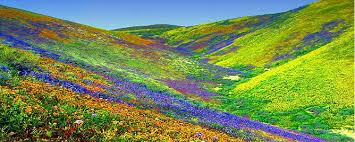
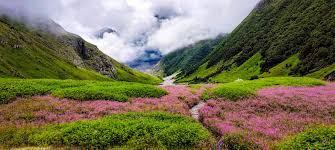
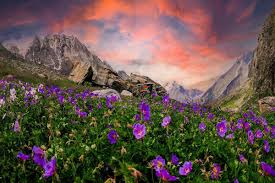

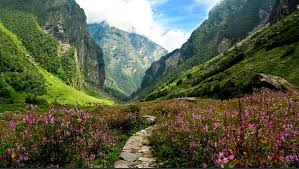
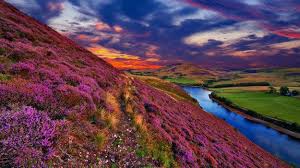
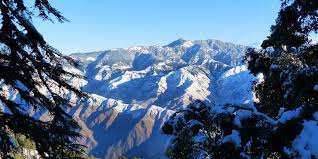
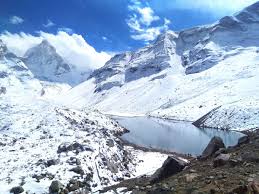
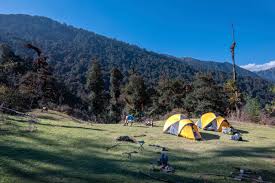
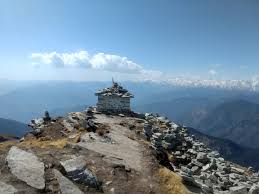
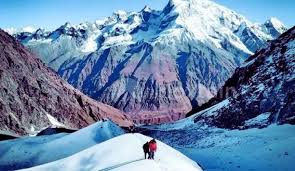
Reviews
There are no reviews yet.